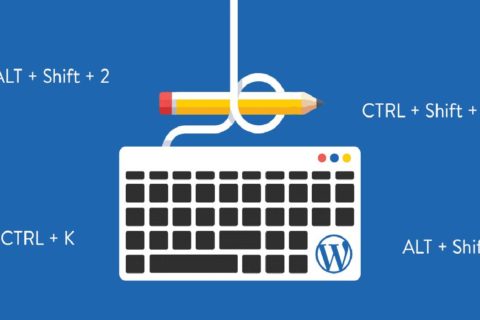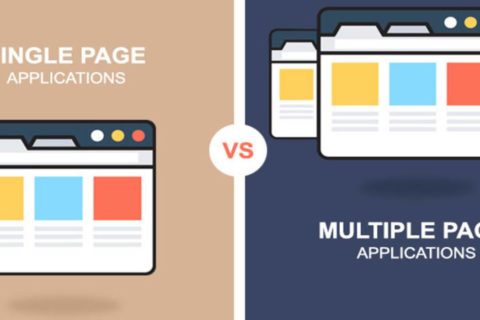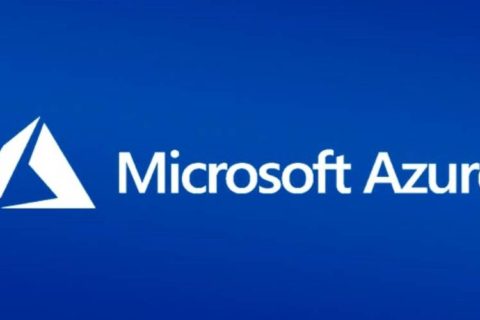Overview
You can create an actual mobile app with React Native that is indistinguishable from one written in Objective-C or Java. They employs the same basic pieces as Android and iOS apps but leverages React and JavaScript to encapsulate them. The smartphone app industry is constantly evolving; new apps are releasing every day, and some old ones fade from our minds, as well as our phones. Developers struggle to keep building apps that will please customers in this chaotic ecosystem because their expectations climb with each new horizon we explore. As a result, developers are coming up with better and more distinctive approaches to make items that will be able to compete in the market.
There are two types of apps on the market:
native and hybrid. Native apps are designed individually for each platform, such as Android, iOS, and Windows, as we already know. Hybrid Apps, on the other hand, are created once and run across various platforms. Both of these types of apps have advantages: native apps are of higher quality, have a better UI/UX, are more durable and safe, but they take a long time and cost a lot of money to develop. On the other hand, hybrid apps are less expensive and faster to develop, but they have poor performance and quality.
So deciding between quality and price is tricky; you’ll have to compromise on one front. However, there must be a way to sidestep this completely. It is the best solution to bring up all this together. We just require JavaScript to build mobile apps with React Native. Furthermore, it follows the same concept as React—a JavaScript toolkit for creating user interfaces—and allows you to create apps with stunning user interfaces. It’s easy to get lost in the details of what React Native does and how it differs from other Hybrid app development platforms.
What is React Native?
React Native (also known as RN) is a popular JavaScript-based mobile app framework for iOS and Android that allows you to create natively rendered apps. The framework will enable you to use the same codebase to construct an application for several platforms. Facebook first launched React Native as an open-source project in 2015. It became one of the most popular mobile development solutions in just a few years. Some of the world’s most popular mobile apps, such as Instagram, Facebook, and Skype, use React Native development. The global success of these language can be attributed to a number of factors:
- First reason is that firms can utilize React Native to write code once and use it to power both iOS and Android apps. This saves a lot of time and money.
- Second, this language was developed on top of React, a popular JavaScript library at the time the mobile framework was introduced.
- Finally, the framework enabled frontend developers who could previously only work with web-based technologies to construct sophisticated, production-ready mobile apps.
Key plus points of React Native:
- Developers can use React Native to construct mobile apps leveraging website technologies. As a result, a developer with web development experience may quickly create a mobile app using these language.
- Because it employs JavaScript components that are built on both iOS and Android components, React Native allows developers to create cross-platform apps that look and feel completely native. Developers don’t have to produce the same program for numerous platforms, which saves time and money. In addition, because React Native has a single codebase, it is easier to maintain.
- Because React Native is based on JSX, developers do not need to learn complicated languages like Objective-C or Java to create an app.
- To compile Native apps for both platforms in JavaScript, React Native employs essential Android and iOS building components. This makes it easier to manage the code base, and it also allows adding new features easier, even while the program is running.
- Clients working on a tight budget and deadline will find React Native to be the ideal solution. It saves them a lot of time and money because they don’t have to design a single software for different platforms. Furthermore, they are not sacrificing quality by adopting React Native. React Native also has attractive UI/UX and security elements that are sometimes lacking in Hybrid projects.
- You can build apps faster with React Native. We can also reload a program instead of recompiling it. You may even execute new features while keeping the state of your application by using its Hot Reloading functionality.
- They also provide a great developer community.
What Makes React Native More Effective?
The popularity of React Native as a cross-platform app development solution is high and continuing to rise. Facebook’s continual improvement makes it easier to use, allowing it to grow its market share every day. Facebook, Instagram, Tesla, Walmart, Microsoft, and Uber are just a few of the popular apps that employ React Native as their mobility solution. Let’s look at why React Native is the most popular platform for developing mobile apps. One reason for this is that Facebook launched it after putting it through its paces on their own mobile app.
Because it came from a prominent name like Facebook, the technology’s launch had a lot of promise. It was employed in some of Facebook’s functions, and we’re all familiar with the Facebook experience. Most importantly, the programming language removed all of the possible stumbling blocks that organizations faced while developing hybrid and cross-platform apps. After implementing the technology, the user experience has improved significantly. To understand why the technology garnered such a positive response despite the highly competitive environment, it’s necessary to understand the development landscape at the time.
There were some technologies used for hybrid app development before React Native, the most common of which was HTML 5. However, it has its own limitations, and technology was only able to tackle a small percentage of problems. The encounter was simply unsatisfactory. In 2015, Facebook launched React native, which used HTML 5 at the time. Initially, the companies were only allowed to produce apps for the iOS platform, but as time went on, the company added support for React Native as well.
Reasons to choose React Native.
Cost of development:
A continual difficulty is staying within a budget and having a very tight budget for the development of an app for numerous platforms. Furthermore, the cost of development is not the only investment to consider. Maintenance, improvements, and other factors aggravate the situation. If you want to create an app for both Android and iOS, you can employ react native developers because they use the same programming technique for both platforms.
Time to market:
The world has become increasingly competitive, and you must be out in front of the competition. The amount of time it took to develop a product from idea to commercial launch. If you want to get into the market quickly, you should choose a cross-platform app development platform. This would allow you to construct the app quickly while also reaching a larger audience.
Post-development upgrades:
The expense of running an app-based company is critical. Consider how much money you’ll need to develop the app for different platforms if you plan to upgrade it after the first version is released. However, using React Native can significantly minimize development costs while also making it much easier to manage frequent updates. Consider the advantages of a cross-platform app.
Instant live updates: The substantial use of javascript enables you to push the update to the user’s phone directly rather than through the app update cycle. The revised version is available to users, and the entire operation is streamlined and simple. Live Updates from Microsoft The CodePush SDK is used to provide notifications to the React native app.
Faster performing applications:
React Native enables you to create applications using JavaScript that are built on declarative programming paradigms, leading to code that is clearer, easier, and simpler. With asynchronous JavaScript interactions with the native environment, the framework creates a highly responsive and fluid mobile UI. This reduces the time it takes for a program to load and improves its performance.
Code reusability:
The reusability of code is one of the main reasons why developers all over the world utilize React Native. To create applications, React native code can be written on any top platform. Android, Windows, iOS, and other platforms are all available. To create the app, you don’t need to use many languages or environments. You only need to be familiar with javascript.
Reduced app load time:
Because speed and performance are so important, you wouldn’t want to overlook React Native’s improved rendering speed and performance. The reduction of app load time is a significant hurdle. To help reduce the app load time, the focus is on improving memory efficiency, list-view scrolling performance, app startup time, and UI responsive menu.
With the Hot Reloading feature, it’s simple to keep an app’s state: React Native can help you improve your experience as a mobile app developer. The main requirement is to shorten the time it takes to save the file and view the changes. Hot Reload and capabilities that make it easier to design modern UI for applications are also successful aims for the frameworks.
Bottom Line
Because React Native is an open-source technology, entrepreneurs found it to be more useful than other available solutions. Then there were a slew of additional characteristics that added to the product’s incredible market success. React Native apps are easier to create and use, and also offer better quality than hybrid apps, and they are also much cheaper than native apps. React Native allows you to have the feel of a native app without having to build one. These apps are going to be the future of hybrid apps. It’s a cross-platform app development tool with incredible features for creating native-like, appealing UI for cross-platform apps. Meaning, for the price of one app, you get a lot of different mobile app experiences. What more can you ask for than less time, less effort, and less money? If you want to create a cross-platform app, you can use React Native.
Do you find this blog interesting? Then please check our blogs too. If you have any queries, then please do contact us. We are here to help you out! To know more about us and our services, then check out our website.




